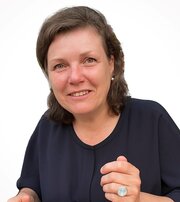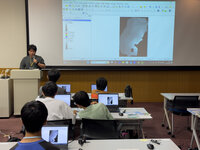-
[イベント情報]2025年10月29日(水)
Related article → 572 Illustrated Books from the Collection of the Royal Museums of Art and History of Belgium (MRAH) have been released
Related databases → MRAH Old Books Database | MRAH Ukiyo-e Database
Background:
Nathalie Vandeperre graduated with a degree in Sinology from KU Leuven (Belgium), where she also obtained a diploma in Cultural Studies. After working for several years as a librarian in the Chinese Library and as a lecturer in the Educational Department of the MRAH, she joined the museum's East Asian Department. In 2013, she was appointed curator of the Japanese, Chinese, and Korean collections of the museum. She has curated several exhibitions and takes a particular interest in the history of the MRAH's collections.Ms. Vandeperre, thank you very much for your time today. Your academic background is in Sinology. What led you to pursue a career as a curator, and how did your interest in Japanese art develop?
Vandeperre: I studied Latin and Greek in secondary school, and when I entered university, I was eager to explore civilizations beyond the European classical world. I turned my attention to Asia but initially found it difficult to choose between Japanese and Chinese studies--I actually had no particular preference. I began studying sinology and soon developed a strong interest in Chinese art, especially painting.
At the beginning of my museum career, there were two curators--one responsible for the Chinese and Korean collections, and another one for the Japanese collection--and I was fortunate to work as an assistant to both. In 1999, I was assigned to the project of opening a Museum for Japanese Art, which truly marked the beginning of my deep engagement with the Japanese art collection. I found it absolutely fascinating.
Later, due to budgetary constraints, the two curatorial positions were merged after the curators retired, and that is how I came to oversee the entire East Asian collection. I have been very lucky in this respect.
The ARC has been collaborating with the MRAH since 2007 to digitize its extensive Japanese collection. Could you tell us how this collaboration was initiated?
Vandeperre: The collaboration with ARC was initiated by Dr. Daan Kok--now curator at the Wereldmuseum Leiden--who was our colleague in Brussels for a year. Through his efforts, Prof. Ryo Akama and his digitization team, led by Dr. Ryoko Matsuba, began the digitization of our prints in 2007. Since then, they have continued to visit twice a year--except during the COVID-19 pandemic--and over the years have managed to digitize the majority of our prints, illustrated books, historical maps, and kabuki posters.
[イベント情報]2025年8月21日(木)Background:
Hiroyuki Yamauchi is an Associate Professor at the Kinugasa Research Organization, Ritsumeikan University, and a faculty member of the Art Research Center (ARC). He earned his master's degree in Letters from Nara University and went on to complete a PhD in Environmental Studies at the University of Tokyo.
His research focuses on the integration of Geographic Information Systems (GIS) with emerging technologies such as Virtual Reality (VR) and the metaverse to enhance geography education. By developing and evaluating educational materials through innovative technological approaches, he aims to make geography more accessible and engaging for learners.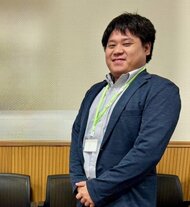 Dr. Yamauchi, thank you very much for your time today. To begin, could you share what initially sparked your interest in geography?
Dr. Yamauchi, thank you very much for your time today. To begin, could you share what initially sparked your interest in geography?Yamauchi: Geography is a discipline that explores a wide range of phenomena occurring in physical space, from the natural environment to human life. Geography is fascinating in that almost anything can be connected into it. What first attracted my interest was the relationships between regional history and the natural environment.
Your research focuses on the use of innovative IT tools--such as Geographic Information Systems (GIS) and Virtual Reality (VR)--to develop and evaluate educational materials for geography classes. What inspired you to explore this intersection of technology and geography education?
Yamauchi: Over the past 30 years, Geographic Information Systems (GIS) have become widely adopted, leading to more diverse research methods in geography and applications of digital maps in society. Geographic information has become a fundamental technology for modern life, and its importance continues to grow. In fact, GIS is now part of the high school geography curriculum in Japan.
However, some high school geography teachers are still unsure how to use GIS and other digital tools effectively in the classroom. Technologies like GIS and Virtual Reality (VR) make it possible to simulate on-site exploration of local areas studied in the classroom.
[イベント情報]2025年4月24日(木)Background:
Originally from New York, Travis Seifman completed MA degrees in Japanese Studies at SOAS University of London and in Art History at the University of Hawaiʻi at Mānoa before earning his PhD in History at the University of California, Santa Barbara. Before joining the ARC, he worked as a postdoctoral Project Researcher at the University of Tokyo Historiographical Institute, where he contributed to the production of an English-language translation of the Ishin Shiryō Kōyō Database. Travis Seifman specializes in Okinawan Studies, and researches in particular the embassies dispatched by the Okinawan kingdom of Lūchū (Ryūkyū) to Edo in the 17th to 19th centuries. Following the 2019 fire at Sui gusuku (Shuri castle), the former Luchuan royal palace, he began to explore the topic of restoration of the palace in the 1980s-90s and again today, and related issues of cultural heritage.Dr. Seifman, thank you very much for your time today. What are some of the main responsibilities in your current role as a Research Manager at the ARC?
Seifman: My responsibilities are fairly wide-ranging. I help facilitate overseas research collaborations and networks, particularly with individuals and institutions in Europe and North America, acting as one of the main points of contact for our affiliated researchers overseas and working to recruit new research projects and partnerships.
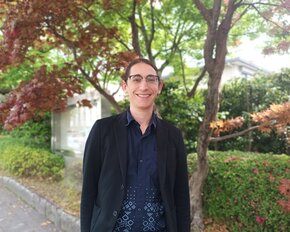
I serve on the Center's Steering Committee as well as the Editorial Committee for the Center's journal, ART RESEARCH. Additionally, I coordinate the International ARC Seminar, our twice-monthly guest lecture series, and assist with a wide range of administrative duties, especially those involving English-language communications.
You first became connected with the ARC during your internship at the Smithsonian. Could you share more about that experience?
Seifman: In the summer of 2011, I spent about ten weeks as a digitization intern at the Freer-Sackler Galleries (now the National Museum of Asian Art), at the Smithsonian Institution, where I had the opportunity to experience the ARC's Digital Archiving Model firsthand. Along with two fellow interns, and under the guidance of Dr. Ryoko Matsuba, we photographed some 2,000 Japanese woodblock-printed and other illustrated books from the 17th to 20th centuries.
[イベント情報]2025年2月13日(木)Background:
Akiko Yano studied in Japan for a BA in international relations at Tsuda College, and for a MA and PhD in Japanese art history at Keio University. She specialises in Japanese painting history. She had an opportunity to study in the UK for one year as a visiting PhD student, based at SOAS University of London, thanks to a scholarship provided by the Sainsbury Institute for the Study of Japanese Arts and Cultures (SISJAC). She continued working in the UK, first as a Research Assistant for the SOAS-British Museum (BM) project on Osaka actor prints 'Kabuki Heroes on the Osaka Stage: 1780-1830' (2005), and then as a Research Fellow for the SOAS-BM project on shunga 'Sex and Pleasure in Japanese Art' (2013). After joining the BM as a curator in 2015, she has been responsible, with two other colleague curators, for the Japanese collection, which holds over 40,000 objects.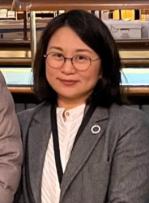
Dr. Yano, thank you very much for your time today. What initially sparked your interest in Japanese art history?
Yano: I was interested in art (mainly painting) and history as a teenager, but I was not particularly looking at the discipline of art history for my BA as I was more interested in international relations through cultural communication. Thinking about my future career, however, I realised that I would feel more of a sense of mission if I could work on the preservation of the cultural heritage of Japan, and hence learnt, belatedly, about a job called a 'curator'. From that point onwards, I switched my specialty to art history with an emphasis on Japanese art history since I was in Japan and thought Japanese art would be easily accessible.
[イベント情報]2024年11月 6日(水)Background:
Kazuko Kameda-Madar completed her PhD in Japanese Art History at the University of British Columbia in 2011. She has taught at the University of Hawaiʻi at Mānoa, University of Hawaiʻi - West Oʻahu, and Hawaiʻi Pacific University for many years. Currently, she holds the position of Visiting Professor of Japanese Art History at the Hebrew University of Jerusalem in Israel (HUJI). She is also a Visiting Researcher at the Art Research Center, Ritsumeikan University. Her research interest is in Edo-period Japanese art and visual culture based on Chinese pictorial themes and episodes, especially visual representations of the Orchid Pavilion Gathering that took place in 4th century China.
Her publications include Imagery of the Orchid Pavilion Gathering (Leiden: Brill, 2022); "An Iconology of the Orchid Pavilion Gathering: Image, Text, and Communities in Tokugawa-Era Japan" in The Tokugawa World (London: Routledge, 2021); and "Copying and Theory in Edo Period Japan" in Theorizing Imitation in a Global Context (London: Association of Art Historians, 2014). She is a co-editor of an anthology Power of Utsushi: Matrix of Creation and Continuity (Kyoto: Shibunkaku Press, 2014), and Sino-Japan Code and the Representation of Nature: Art and Literature of Japan in the 16th and 17th centuries (Tokyo: Bensei Press, 2019).Dr. Kameda-Madar, thank you very much for your time today. What sparked your interest in becoming a researcher in Japanese art history?
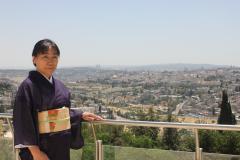
Kameda-Madar: Although I was always interested in art as a child in Japan, I took it more seriously when I began my formal education abroad - at the University of Hawaiʻi. Upon starting my studies, I realized how rich and wonderful Japanese art is, and I wanted to learn more about it. Prof. Mariko Inoue was my first mentor, greatly influencing my academic direction. I was fortunate to be surrounded by specialists in Chinese art. When I was seeking a topic for my MA thesis, Prof. James Cahill--who was in Hawaiʻi at that time--kindly introduced me to Prof. Hironobu Kohara in Kyoto. Under his guidance, I chose to study the theme of the Orchid Pavilion Gathering. This theme, which I believe embodies a strong, yet very subtle, implicit anti-war sentiment, captivated me, and I began to focus my research on the Sino-Japanese cultural relationship.
[イベント情報]2024年8月 6日(火)Background:
Toshie Marra joined the C. V. Starr East Asian Library (EAL), University of California, Berkeley in 2012 as the Librarian for the Japanese Collection. Her areas of responsibilities include developing EAL's Japanese language collections and providing instruction and reference services for Japanese studies. Previously, she worked at the Richard C. Rudolph East Asian Library at the University of California, Los Angeles (UCLA) for 22 years. She holds a Master of Library and Information Science degree from UCLA with specialization in cataloging and preservation.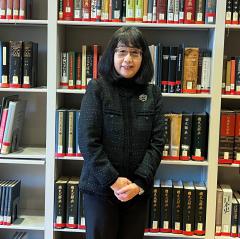
Thank you very much for your time today. What sparked your interest in becoming a librarian?
Marra: Marrying a scholar of Japanese literature brought me to UCLA in the late 1980s. At that time, UCLA East Asian Library had just begun cataloging Chinese, Japanese, and Korean materials in the OCLC CJK system. I was hired as their first copy-cataloger for Japanese materials. Soon I discovered a shortage of librarians in North America with expertise in the Japanese language, especially those knowledgeable about handling Japanese pre-modern books, or kotenseki. As a result, many unique holdings remained uncatalogued in library storages. This unfortunate situation motivated me to pursue a career as Japanese Studies librarian in the U. S.
[イベント情報]2024年4月17日(水)Background:
The ARC-iJAC project Ukiyo-e, illustrated books, albums and painted books in Madrid Collections emerged as an initiative of Asia Research Group (GIA), attached to the Complutense University of Madrid in Spain, which has been collaborating with the Art Research Center (ARC) for about two years and thanks to which significant progress has been made in the analysis and cataloging of ukiyo-e albums and books that are part of the collections of the Complutense University Library and that have remained almost unknown and, in some cases, in a poor state of preservation.
Involved in this project have been the professors Pilar Cabañas, Matilde Arias, Aitana Merino, and Ana Trujillo with the new incorporation of the researcher Alba Finol.
Click here for the Japanese collection of the UCM:
→ARC Ukiyo-e Portal Database
→ARC Early Japanese Books Portal DatabaseCould you please tell us about your motivation and the purpose of conducting the ARC-iJAC research project on the ukiyo-e, illustrated books, and albums in Madrid collections?
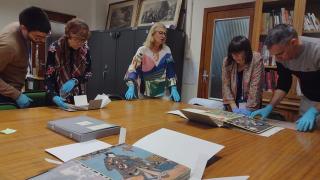
Cabañas: What encouraged us to initiate this project was to give value to the collections of the Complutense Library. Due to a lack of resources, these books and ukiyo-e had remained uncatalogued in the university's collections.
This project has enabled us to study them in-depth and make them known, not only in the Spanish context as part of the heritage of our institution, but also internationally, since the ARC database is a platform of great diffusion for specialists in Japanese art from all over the world. We are delighted with this possibility. Moreover, thanks to this collaboration, being in a space of great specialists, we can compare our knowledge and expand it.
[イベント情報]2024年1月26日(金)Background:
Prof. Ruck Thawonmas, a research member of the Art Research Center (ARC), received his B.Eng. degree in electrical engineering from Chulalongkorn University, Thailand, in 1987, an M.Eng. degree in information science from Ibaraki University in 1990, and a Ph.D. degree in information engineering from Tohoku University in 1994.
He is a Full Professor at the College of Information Science and Engineering, Ritsumeikan University, where he leads the Intelligent Computer Entertainment Laboratory (ICE Lab).Prof. Thawonmas, thank you very much for your time today. Can you tell us how you joined Ritsumeikan University and the Art Research Center (ARC)?
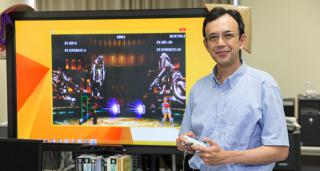 Prof. Thawonmas: After I finished my Ph.D. at Tohoku University, I worked at several places in Japan. One day, I saw an interview with a non-Japanese professor at Ritsumeikan University. Seeing that the interviewee was a full professor doing well despite being non-Japanese in an international atmosphere environment encouraged me to join the university.
Prof. Thawonmas: After I finished my Ph.D. at Tohoku University, I worked at several places in Japan. One day, I saw an interview with a non-Japanese professor at Ritsumeikan University. Seeing that the interviewee was a full professor doing well despite being non-Japanese in an international atmosphere environment encouraged me to join the university.I joined Ritsumeikan University in 2002 when the university was planning to establish my current college--the College of Information Science and Engineering (CISE).
While my early research focused on data mining, upon joining Ritsumeikan, I decided to slightly change my research area to set myself apart from other professors. I started to look into entertainment computing and computer games, which were not yet well-recognized research areas at that time, either domestically or internationally.
From the beginning of my tenure at Ritsumeikan, I became involved in the ARC's research activities, including the application and subsequent execution of the 21st Century COE (Center for Excellence) Program of the Ministry of Education (MEXT) "Kyoto Art Entertainment Innovation Research." Guess who added the term entertainment there!
As the Head of the Intelligent Computer Entertainment Laboratory (ICE Lab), you have been engaged in research on game AI and intelligent techniques for increasing the entertainment value of computer games. Could you give us some examples of how digital resources of the ARC have been utilized in your research projects?
Prof. Thawonmas: As part of our effort to promote Japanese culture through games, ukiyo-e prints from the ARC Ukiyo-e Portal Database have been incorporated as background images in various projects on game AI.
関連記事はこちら → ロイヤル・オンタリオ・ミュージアム所蔵の浮世絵版画作品(4233点)と古典籍(74点)が公開されました
関連データベースはこちら → Royal Ontario Museum Ukiyo-e Database / Royal Ontario Museum Japanese Old Books Database
Background:
Dr. Akiko Takesue joined the Royal Ontario Museum (ROM) in 2021 as the Bishop White Committee Associate Curator of Japanese Art & Culture, an endowed position, and is in charge of researching and developing the ROM's collection of Japanese art and culture that comprises approximately 10,000 objects.
Dr. Takesue holds a doctorate in Art History from York University and Master's degrees from the University of Toronto and the University of New South Wales. In addition to the ROM, she has broad curatorial experience at the Montreal Museum of Fine Arts, the National Gallery of Art in Washington, DC, and the Art Gallery of New South Wales in Sydney, Australia.Dr Takesue, thank you very much for your time today. What sparked your interest in Japanese art history?
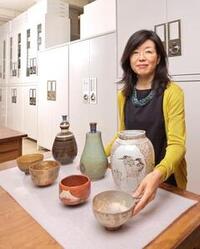 Takesue: It is a long story since I left Japan almost 25 years ago. When I was younger and living in Japan, I was more interested in Western than Japanese art. Hence, I went to Sydney, Australia, to study art. At that time, I had the idea to work in an art gallery dealing with Western contemporary art.
Takesue: It is a long story since I left Japan almost 25 years ago. When I was younger and living in Japan, I was more interested in Western than Japanese art. Hence, I went to Sydney, Australia, to study art. At that time, I had the idea to work in an art gallery dealing with Western contemporary art.Then, while I was doing an internship at the Art Gallery of New South Wales in Sydney under a Japanese curator, I discovered the beauty and excitement of studying and dealing with Japanese art. Interestingly, I realized the Japanese art collection there was different from what I thought of Japanese art, which was sort of a trigger for me to research the global circulation of Japanese art since the Meiji period.
As the Japanese collections overseas consist of many export arts, i.e., made in Japan but only for the Western market, I discovered many things I never knew about when I was in Japan. So, I became fascinated with the fact that Japanese art in Sydney was indeed different from my understanding of Japanese art. This interest continues even now.
I also investigated in my PhD dissertation how objects stay the same while their meanings shift from time to time, place to place.
続きを読む>>Background:
Masami Yamada, leader of the ARC-iJAC project Re-thinking Japonisme: Digitization of the V&A's collection of Japanese illustrated books and researching its formation in the late 19th century, is a Curator in the Victoria and Albert Museum's Asia Department. She has particular responsibility for the collections of Japanese lacquerware, netsuke, ukiyo-e woodblock prints and contemporary craft. Her current area of research is contemporary craft, particularly the work of urushi lacquer artists. In 2022, she received the inaugural Sir Nicholas Goodison Award for Contemporary Craft from the Art Fund to further develop the Museum's internationally renowned Japanese lacquer collection.Thank you very much for your time today. How did you first connect with the Art Research Center (ARC) or hear about the International Joint Digital Archiving Center for Japanese Art and Culture (ARC-iJAC)?
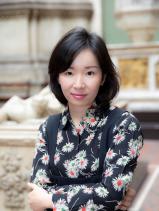
Yamada: The V&A was the first museum where Professor Ryо̄ Akama from the ARC conducted the digitization of a Japanese art collection in Europe 20 years ago. In this first phase of the partnership project, every single artwork from the Museum's extensive collection of ukiyo-e woodblock prints, numbering over 25,000 in total, was photographed. These images were subsequently uploaded onto the Museum's publicly accessible collection database, Explore the Collections. It was a remarkable achievement in the early 2000s when the digital presence of museums was fairly limited.
Soon after I joined the V&A in 2018, I had a chance to meet with Professor Akama and Dr. Ryо̄ko Matsuba, Lecturer in Digital Japanese Arts and Humanities at the Sainsbury Institute for the Study of Japanese Arts and Cultures (SISJAC), in London to discuss the possibility of initiating the second phase of the digitization project. The collections of ukiyo-e prints and illustrated books remain largely uncatalogued and without photographs in the case of the book collection. We agreed that there was much scope to improve the visibility and accessibility of these important collections. So, a collaborative project with the ARC was something I planned to initiate from the very beginning of my time at the V&A.


